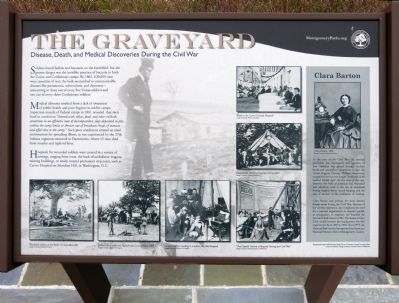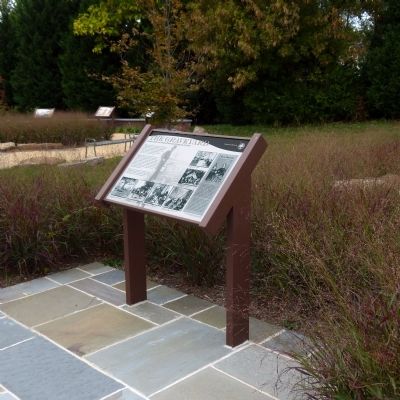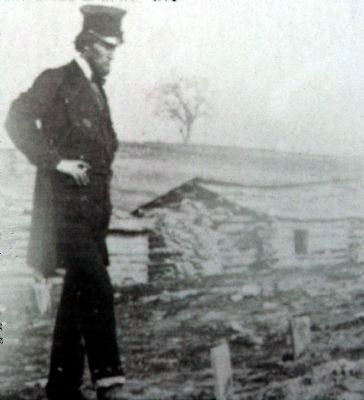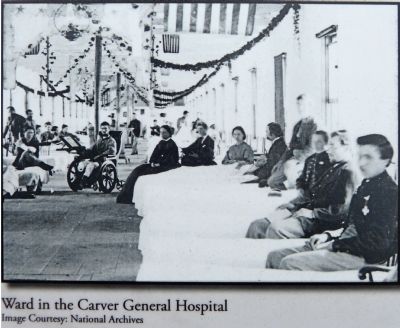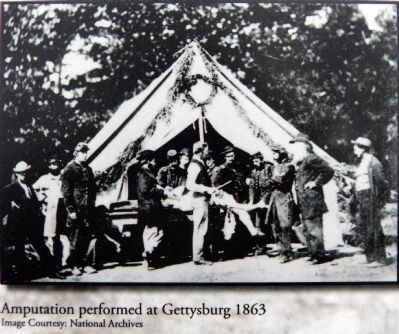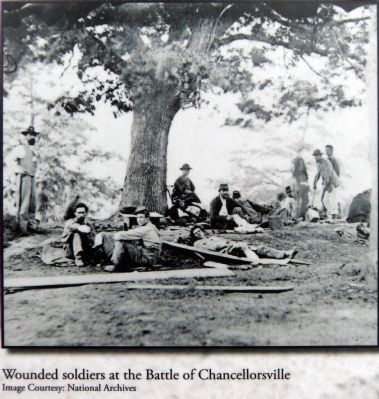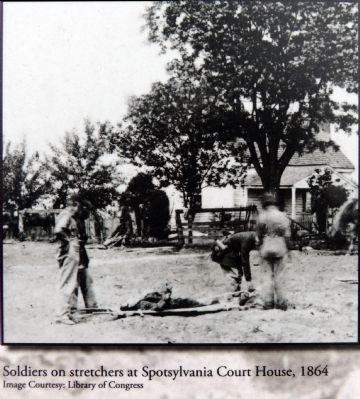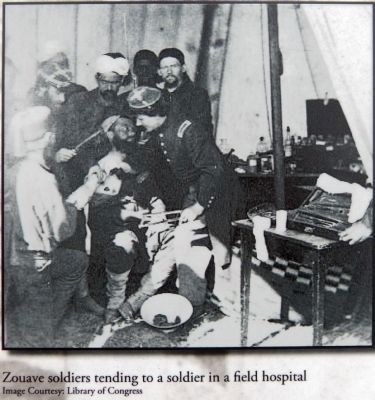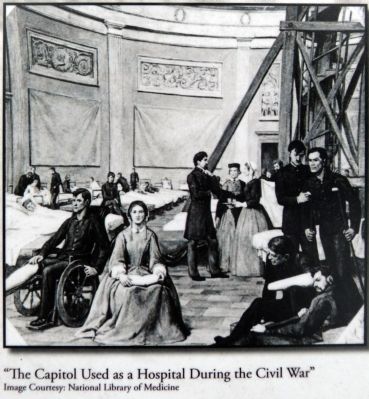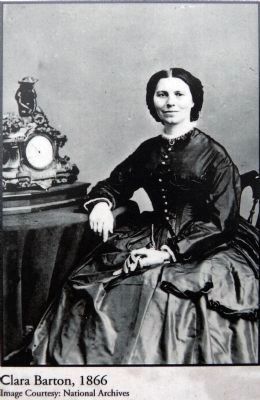Darnestown in Montgomery County, Maryland — The American Northeast (Mid-Atlantic)
Disease, Death, and Medical Discoveries During the Civil War
The Graveyard
— Darnestown —
Inscription.
Soldiers feared bullets and bayonets on the battlfield, but the greater danger was the invisible presence of bacteria in both Union and Confederate camps. By 1865, 620,000 men were casualties of war; the bulk succumbed to communicable diseases like pneumonia, tuberculosis, and dysentery — amounting to three out of every five Union soldiers and two out of every three Confederate soldiers.
Medical ailments resulted from a lack of awareness of public health and poor hygiene in soldier camps. Inspection records of Federal camps in 1861 revealed that men lived in conditions "littered with refuse, food, and other rubbish, sometimes in an offensive state of decomposition; slops deposited in pits within camp limits or thrown out of broadcast; heaps of manure and offal close to the camp." Such poor conditions created an ideal environment for spreading illness, as was experienced by the 27th Indiana regiment stationed at Darnestown, where 15 men died of measles and typhoid.
Hospitals for wounded soldiers were created in a variety of settings, ranging from tents, the back of ambulance wagons, existing buildings, or newly created permanent structures, such as Carver Hospital on Meridian Hill, in Washington D.C.
(sidebar)
Clara Barton
At the start of the Civil War, the medical profession was unprepared and ignorant of how infection was spread through unclean hands and unsterilized equipment. In fact the Union Surgeon General, William Hammond, recognized the war was fought "at the end of the Medical Middle Ages". By the close of the war, however, the field of medicine had witnessed new advances, such as the use of anesthesia during surgery, better record keeping and the role of women in the profession of nursing.
Clara Barton was perhaps the most famous female nurse during the Civil War. Because of her combat experience, she recognized the need for a national organization to respond quickly to emergencies. In response, she founded the American Red Cross in 1881. Her home in Glen Echo would become the headquarters for this organization from 1897 to 1904. Since 1975, the National Park Service has operated her home as a National Historic Site in Montgomery County.
Erected 2012 by Montgomery Parks.
Topics and series. This historical marker is listed in these topic lists: Science & Medicine • War, US Civil. In addition, it is included in the Clara Barton series list. A significant historical year for this entry is 1865.
Location. 39° 6.203′ N, 77° 17.455′ W. Marker is in Darnestown, Maryland, in Montgomery County. Marker can be reached from Darnestown
Road (Maryland Route 28) east of Seneca Road (Maryland Route 112), on the left when traveling east. Located in Darnestown Square Heritage Park. Touch for map. Marker is at or near this postal address: 14029 Darnestown Road, Gaithersburg MD 20878, United States of America. Touch for directions.
Other nearby markers. At least 8 other markers are within walking distance of this marker. Clues to the Past: Oral History and Archaeology (here, next to this marker); A 19th Century Crossroads (a few steps from this marker); Andrew Small Academy (a few steps from this marker); The Origins of Darnestown (a few steps from this marker); Darnestown: A Strategic Point of Defense (a few steps from this marker); Civil War Troops & Darnestown Residents (within shouting distance of this marker); The Signal Corps and Wartime Communications (within shouting distance of this marker); The Civil War in Darnestown (within shouting distance of this marker). Touch for a list and map of all markers in Darnestown.
Credits. This page was last revised on June 16, 2016. It was originally submitted on October 29, 2013, by Allen C. Browne of Silver Spring, Maryland. This page has been viewed 754 times since then and 34 times this year. Photos: 1, 2, 3, 4, 5, 6, 7, 8, 9, 10. submitted on October 29, 2013, by Allen C. Browne of Silver Spring, Maryland. • Bernard Fisher was the editor who published this page.
